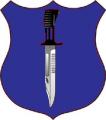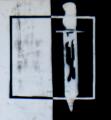MANEUVER WARFARE
The Marine Corps concept for winning under these conditions is a warfighting doctrine based on rapid, flexible, and opportunistic maneuver. But in order to fully appreciate what we mean by maneuver we need to clarify the term. The traditional understanding of maneuver is a spatial one; that is, we maneuver in space to gain a positional advantage. However, in order to maximize the usefulness of maneuver, we must consider maneuver in time as well; that is, we generate a faster operational tempo than the enemy to gain a temporal advantage. It is through maneuver in both dimensions that an inferior force can achieve decisive superiority at the necessary time and place.
Maneuver warfare is a warfighting philosophy that seeks to shatter the enemy's cohesion through a series of rapid, violent, and unexpected actions which create a turbulent and rapidly deteriorating situation with which he cannot cope.
From this definition we see that the aim in maneuver warfare is to render the enemy incapable of resisting by shattering his moral and physical cohesion--his ability to fight as an effective, coordinated whole--rather than to destroy him physically through incremental attrition, which is generally more costly and time-consuming. Ideally, the components of his physical strength that remain are irrelevant because we have paralyzed his ability to use them effectively. Even if an outmaneuvered enemy continues to fight as individuals or small units, we can destroy the remnants with relative ease because we have eliminated his ability to fight effectively as a force.
This is not to imply that firepower is unimportant. On the contrary, the suppressive effects of firepower are essential to our ability to maneuver. Nor do we means to imply that we will pass up the opportunity to physically destroy the enemy. We will concentrate fires and forces at decisive points to destroy enemy elements when the opportunity presents itself and when it fits our larger purposes. But the aim is not an unfocused application of firepower for the purpose of incrementally reducing the enemy's physical strength. Rather, it is the selective application of firepower in support of maneuver to contribute to the enemy's shock and moral disruption. The greatest value of firepower is not physical destruction--the cumulative effects of which are felt only slowly--but the moral dislocation it causes.
If the aim of maneuver warfare is to shatter the enemy's cohesion, the immediate object toward that end is to create a situation in which he cannot function. By our actions, we seek to pose menacing dilemmas in which events happen unexpectedly and faster than the enemy can keep up with them. The enemy must be made to see his situation not only as deteriorating, but deteriorating at an ever-increasing rate. The ultimate goal is panic and paralysis, an enemy who has lost the ability to resist.
Inherent in maneuver warfare is the need for speed to seize the initiative, dictate the terms of combat, and keep the enemy off balance, thereby increasing his friction. Through the use of greater tempo and velocity, we seek to establish a pace that the enemy cannot maintain so that with each action his reactions are increasingly late--until eventually he is overcome by events.
Also inherent is the need for violence, not so much as a source of physical attrition but as a source of moral dislocation. Toward this end, we concentrate strength against critical enemy vulnerabilities, striking quickly and boldly where, when, and how it will cause the greatest damage to our enemy's ability to fight. Once gained or found, any advantage must be pressed relentlessly and unhesitatingly. We must be ruthlessly opportunistic, actively seeking out signs of weakness, against which we will direct all available combat power. And when the decisive opportunity arrives, we must exploit it fully and aggressively, committing every ounce of combat power we can muster and pushing ourselves to the limits of exhaustion.
The final weapon in our arsenal is surprise, the combat value of which we have already recognized. By studying our enemy we will attempt to appreciate his perceptions. Through deception we will try to shape his expectations. Then we will dislocate them by striking at an unexpected time and place. In order to appear unpredictable, we must avoid set rules and patterns, which inhibit imagination and initiative. In order to appear ambiguous and threatening, we should operate on axes that offer several courses of action, keeping the enemy unclear as to which we will choose.













Bookmarks